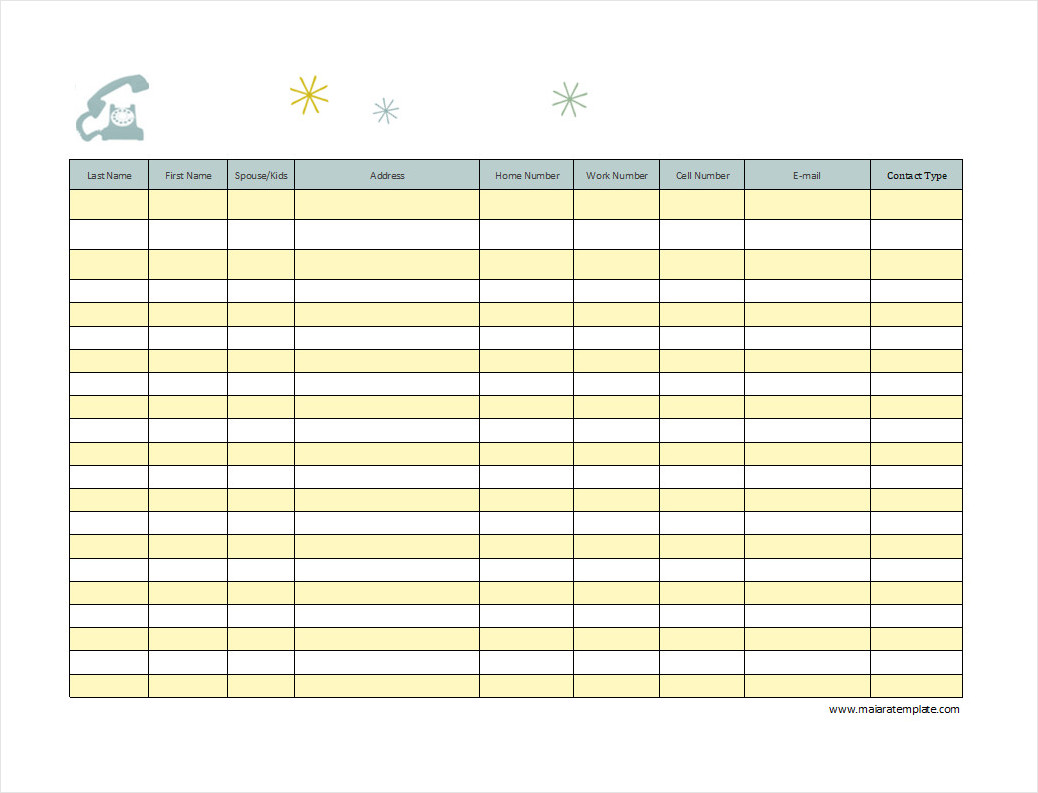Phone lists play a crucial role in our daily lives, whether it’s for personal or professional use. These lists provide a centralized and accessible record of contact information, enabling efficient and streamlined communication by allowing users to quickly find and retrieve phone numbers and other details for individuals and organizations.

Beyond simple contact lookup, phone lists facilitate personal connections, support business operations like sales and marketing, and help manage important personal and professional relationships.
What Is a Phone List?
A phone list, also known as a contact list or phone directory, is a compilation of contact information, including phone numbers, email addresses, physical addresses, and other relevant details, for individuals or organizations.
These lists can be created manually or digitally using tools like spreadsheets, contact management software, or online databases.
Functions and Benefits of Phone Lists
Phone lists serve a variety of functions and offer numerous benefits for users. Here are some of the key reasons why phone lists are essential:
1. Efficient Communication
Phone lists enable users to quickly find and contact individuals or organizations, saving time and effort in searching for contact information.
2. Personal Connections
By storing contact details of friends, family, and colleagues in a phone list, users can easily stay in touch and nurture personal relationships.
3. Business Operations Support
For businesses, phone lists are invaluable for sales and marketing efforts, helping to reach out to potential customers and partners effectively.
4. Relationship Management
Phone lists help users keep track of important contacts, schedule follow-up calls or meetings, and maintain strong personal and professional relationships.
5. Emergency Preparedness
Having a phone list with emergency contacts can be crucial during unexpected situations, providing quick access to help when needed.
6. Networking Opportunities
Phone lists can also serve as a valuable tool for networking, allowing users to connect with new people, build professional relationships, and explore collaboration opportunities. By expanding their contact list and staying connected with industry peers, users can unlock new opportunities and expand their professional network.
7. Time Management
With a well-organized phone list, users can better manage their time and prioritize their communication tasks. By having quick access to contact information and being able to schedule calls or meetings efficiently, users can make the most of their day and ensure that important conversations are not missed or delayed.
8. Information Sharing
Phone lists can be shared among family members, colleagues, or friends to facilitate information sharing and collaboration. By creating a shared phone list, users can ensure that everyone has access to important contacts and can reach out to them when needed. This can be particularly useful in emergencies or when coordinating group activities.
9. Personal Organization
For individuals who lead busy lives or have multiple contacts to manage, a phone list offers a practical solution for personal organization. By keeping all contact information in one place and structuring it in a way that makes sense to them, users can stay on top of their communication tasks and ensure that they don’t overlook important connections.
How to Create a Phone List
Creating a phone list is a straightforward process that can be customized to suit individual needs. Here are some steps to help you create your own phone list:
Gather Contact Information
The first step in creating a phone list is to gather all the contact information you want to include. This may include phone numbers, email addresses, physical addresses, and any other relevant details for the individuals or organizations you want to add to your list.
Choose a Format
Once you have collected the contact information, you need to decide on the format of your phone list. You can choose to create a digital list using software or online tools, or opt for a traditional paper-based list. Consider your preferences and how you plan to use the list when selecting the format.
Organize the Information
Organizing the contact information in your phone list is crucial for easy access and retrieval. You can arrange the contacts alphabetically, categorize them by relationship or purpose, or group them based on frequency of contact. Choose a method that works best for you and allows you to find contacts quickly.
Update Regularly
It’s important to update your phone list regularly to ensure that the information is current and accurate. Contact details may change over time, so make it a habit to review and update your list periodically. This will help you avoid any communication errors and ensure that you can reach contacts when needed.
Backup the List
If you are using a digital phone list, it’s essential to create backups to prevent data loss. Consider storing your list in multiple locations or using cloud storage to ensure that you can access it even if your device malfunctions. Regularly backing up your phone list will give you peace of mind and safeguard your important contacts.
Share the List
Consider sharing your phone list with trusted family members, colleagues, or friends for easy access and collaboration. By sharing your list, you can ensure that others have access to important contacts and can reach out to them on your behalf if needed. This can be particularly useful in emergencies or when coordinating group activities.
Phone List Template
A phone list is a simple and practical tool for organizing contact information in one place. It helps record names, phone numbers, and other details, making it easier to access important contacts quickly.
To keep your contact information neat and accessible, use our free phone list template and manage your connections with ease!
Phone List Template – Download
- Free Printable Expense Budget Template - November 30, 2025
- Free Printable Exit Ticket Template - November 27, 2025
- Free Printable Exercise Planning Template - November 24, 2025